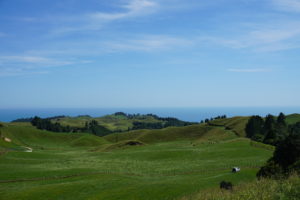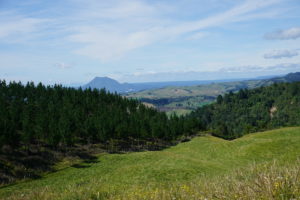Back-Arc Rifting in New Zealand
The Taupo Volcanic Zone (TVZ) has the world’s highest silicic magma production rates known, and it is a fundamental component of the Hikurangi subduction system. The northern TVZ transitions to backarc spreading in the Whakatane rift zone offshore. Yet, many questions remain regarding the spatial distribution of magma bodies, the proportion of extensional strain accommodated by normal faulting and magma intrusion, and the nature of the transition to seafloor spreading in the Whakatane back-arc rift zone. In October 2017, we deployed 7 broadband seismometers in the northern TVZ, enclosing the zone of long-lived uplift and seismic swarms along the western flank of the Whakatane graben. We use the BARNZ array and existing GEONET stations to locate earthquakes and determine focal mechanism solutions in the northern TVZ and Whakatane basin. We report on the first 8 months of seismicity, including the October 31, 2017 Mw 4.7 earthquake and aftershocks. First motion focal mechanisms indicate the mainshock was oblique normal slip, and aftershocks occurred along an approximately 15 km-long segment of the White Island border fault. New crustal-scale seismic imaging from the SHIRE experiment, and existing reflection data provide constraints on the time-averaged deformation for comparison with our active deformation studies.
Project Team
High School student: Jeysi Guillen (NOLA Sci High)
Undergrad students : Betina Brockamp (Tulane), Derrick Murekezi (U Rochester), Carrie Leibensperger (Tulane), Reece Franks, Sam Treweek, Megan Kortink (Victoria Univ)
Tulane: Cynthia Ebinger, Ryan Gallacher, ThiQuan Pham
Victoria University: Hubert Zal, Martha Savage,
Auckland University: Franz Lutz, Robert Pickle, Pablo Aguilera, Jennifer Eccles



